Hyundai i30 vs VW Polo - Differences and prices compared
Costs and Efficiency:
Looking at overall running costs, both models reveal some interesting differences in everyday economy.
VW Polo has a convincingly advantage in terms of price – it starts at 17000 £, while the Hyundai i30 costs 24000 £. That’s a price difference of around 6990 £.
Fuel consumption also shows a difference: VW Polo manages with 5.10 L and is therefore a bit more efficient than the Hyundai i30 with 5.70 L. The difference is about 0.60 L per 100 km.
Engine and Performance:
Under the bonnet, it becomes clear which model is tuned for sportiness and which one takes the lead when you hit the accelerator.
When it comes to engine power, the VW Polo has a clearly perceptible edge – offering 207 HP compared to 140 HP. That’s roughly 67 HP more horsepower.
In acceleration from 0 to 100 km/h, the VW Polo is clearly quicker – completing the sprint in 6.50 s, while the Hyundai i30 takes 9.60 s. That’s about 3.10 s faster.
In terms of top speed, the VW Polo performs to a small extent better – reaching 240 km/h, while the Hyundai i30 tops out at 197 km/h. The difference is around 43 km/h.
There’s also a difference in torque: VW Polo pulls distinct stronger with 320 Nm compared to 253 Nm. That’s about 67 Nm difference.
Space and Everyday Use:
Beyond pure performance, interior space and usability matter most in daily life. This is where you see which car is more practical and versatile.
Seats: offers more seating capacity – vs .
In curb weight, VW Polo is a bit lighter – 1143 kg compared to 1291 kg. The difference is around 148 kg.
In terms of boot space, the Hyundai i30 offers slightly more room – 395 L compared to 351 L. That’s a difference of about 44 L.
In maximum load capacity, the Hyundai i30 performs somewhat better – up to 1301 L, which is about 176 L more than the VW Polo.
When it comes to payload, Hyundai i30 somewhat takes the win – 509 kg compared to 457 kg. That’s a difference of about 52 kg.
Who comes out on top?
Overall, the VW Polo shows itself to be outperforms in nearly all aspects and secures the title of DriveDuel Champion.
It convinces with the more balanced overall package and proves to be the more versatile choice for everyday use.
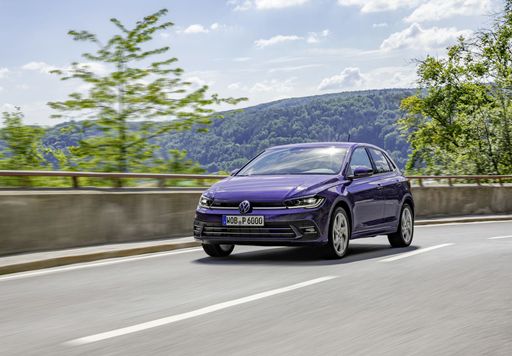 @ Volkswagen AG / VW Media
@ Volkswagen AG / VW Media
VW Polo
Costs and Consumption
View detailed analysis
Engine and Performance
View detailed analysis
Dimensions and Body
View detailed analysis
Hyundai i30
The Hyundai i30 proves that sensible can also be stylish, offering a confident driving character wrapped in neat, modern design. It serves up a roomy, well-equipped cabin and composed ride that make everyday motoring feel like a clever purchase rather than a compromise.
details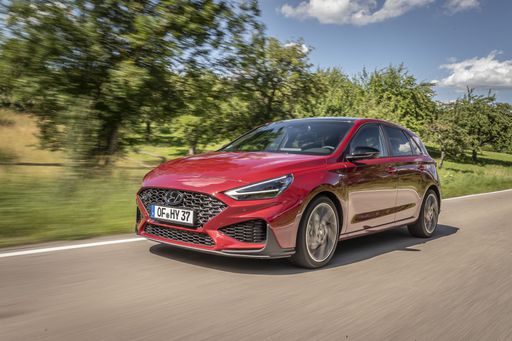 @ Hyundai Motor Company
@ Hyundai Motor Company
 @ Hyundai Motor Company
@ Hyundai Motor Company
 @ Hyundai Motor Company
@ Hyundai Motor Company
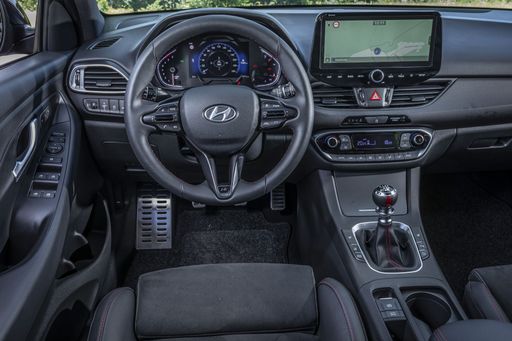 @ Hyundai Motor Company
@ Hyundai Motor Company
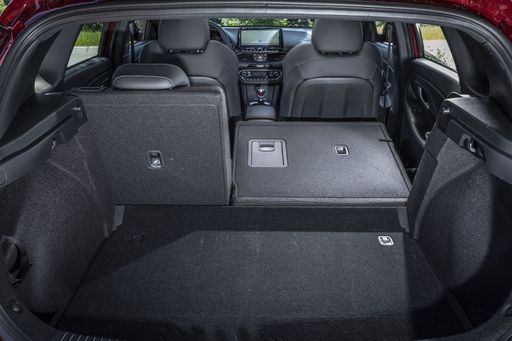 @ Hyundai Motor Company
@ Hyundai Motor Company
VW Polo
The Polo is a small car with surprisingly grown-up refinement, delivering comfortable packaging, crisp handling and a build quality that punches above its class. For buyers who want a practical, fuss-free hatch that still feels a little premium, it’s a sensible, slightly cheeky choice you’ll enjoy every day.
details @ Volkswagen AG / VW Media
@ Volkswagen AG / VW Media
 @ Volkswagen AG / VW Media
@ Volkswagen AG / VW Media
 @ Volkswagen AG / VW Media
@ Volkswagen AG / VW Media
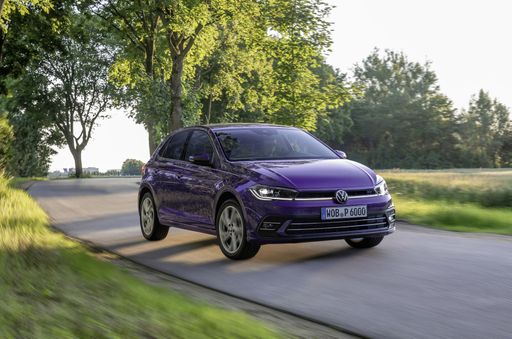 @ Volkswagen AG / VW Media
@ Volkswagen AG / VW Media
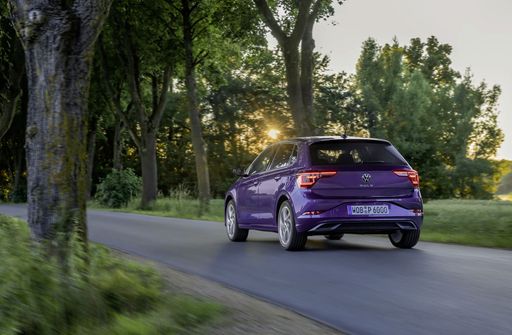 @ Volkswagen AG / VW Media
@ Volkswagen AG / VW Media
 @ Volkswagen AG / VW Media
@ Volkswagen AG / VW Media
 @ Hyundai Motor Company
@ Hyundai Motor Company
|
 @ Volkswagen AG / VW Media
@ Volkswagen AG / VW Media
|
|
|
|
Costs and Consumption |
|
|---|---|
|
Price
24000 - 29300 £
|
Price
17000 - 30400 £
|
|
Consumption L/100km
5.7 - 6 L
|
Consumption L/100km
5.1 - 6.5 L
|
|
Consumption kWh/100km
-
|
Consumption kWh/100km
-
|
|
Electric Range
-
|
Electric Range
-
|
|
Battery Capacity
-
|
Battery Capacity
-
|
|
co2
130 - 136 g/km
|
co2
116 - 148 g/km
|
|
Fuel tank capacity
50 L
|
Fuel tank capacity
40 L
|
Dimensions and Body |
|
|---|---|
|
Body Type
Hatchback
|
Body Type
Hatchback
|
|
Seats
5
|
Seats
5
|
|
Doors
5
|
Doors
5
|
|
Curb weight
1291 - 1407 kg
|
Curb weight
1143 - 1378 kg
|
|
Trunk capacity
395 L
|
Trunk capacity
351 L
|
|
Length
4340 mm
|
Length
4074 mm
|
|
Width
1795 mm
|
Width
1751 mm
|
|
Height
1455 mm
|
Height
1431 - 1451 mm
|
|
Max trunk capacity
1301 L
|
Max trunk capacity
1125 L
|
|
Payload
463 - 509 kg
|
Payload
432 - 457 kg
|
Engine and Performance |
|
|---|---|
|
Engine Type
Petrol, Petrol MHEV
|
Engine Type
Petrol
|
|
Transmission
Manuel, Automatic
|
Transmission
Manuel, Automatic
|
|
Transmission Detail
Manual Gearbox, Dual-Clutch Automatic
|
Transmission Detail
Manual Gearbox, Dual-Clutch Automatic
|
|
Drive Type
Front-Wheel Drive
|
Drive Type
Front-Wheel Drive
|
|
Power HP
100 - 140 HP
|
Power HP
80 - 207 HP
|
|
Acceleration 0-100km/h
9.6 - 13.1 s
|
Acceleration 0-100km/h
6.5 - 15.6 s
|
|
Max Speed
178 - 197 km/h
|
Max Speed
171 - 240 km/h
|
|
Torque
172 - 253 Nm
|
Torque
93 - 320 Nm
|
|
Number of Cylinders
3 - 4
|
Number of Cylinders
3 - 4
|
|
Power kW
74 - 103 kW
|
Power kW
59 - 152 kW
|
|
Engine capacity
998 - 1482 cm3
|
Engine capacity
999 - 1984 cm3
|
General |
|
|---|---|
|
Model Year
2024
|
Model Year
2024 - 2025
|
|
CO2 Efficiency Class
D, E
|
CO2 Efficiency Class
D, E
|
|
Brand
Hyundai
|
Brand
VW
|
What drive types are available for the Hyundai i30?
Available configurations include Front-Wheel Drive.
The prices and data displayed are estimates based on German list prices and may vary by country. This information is not legally binding.
